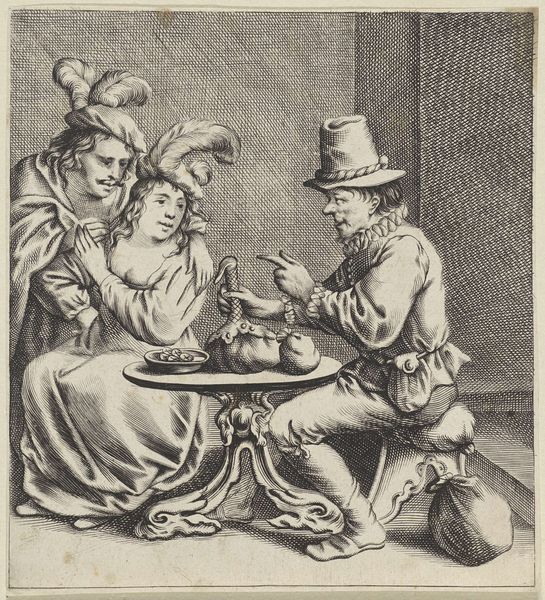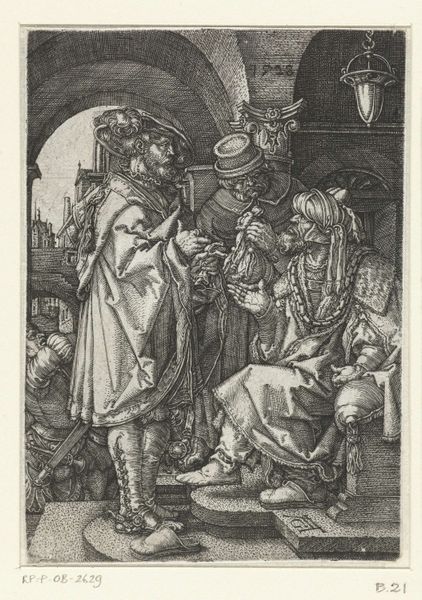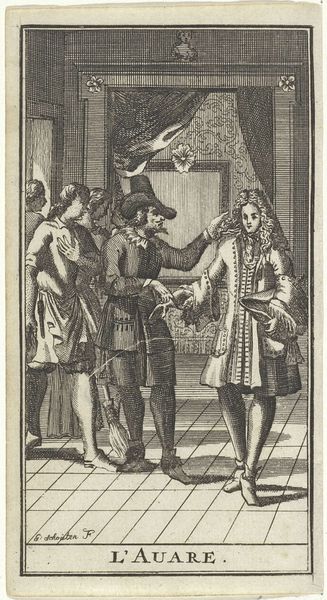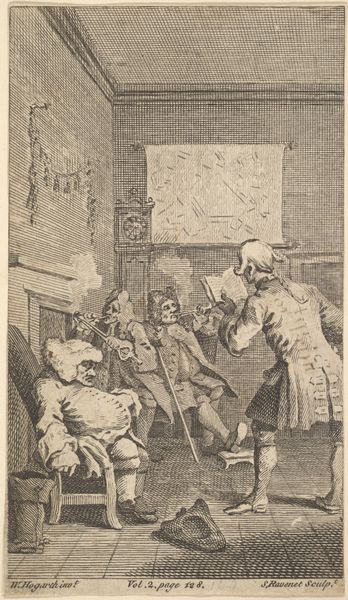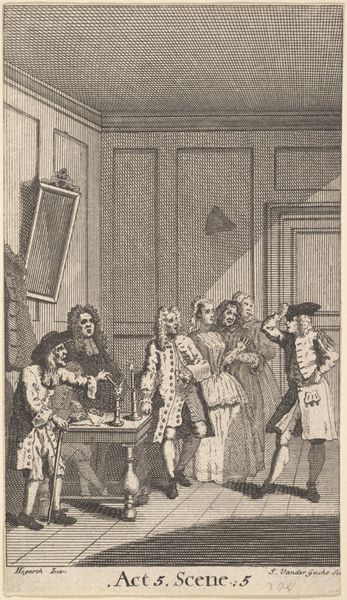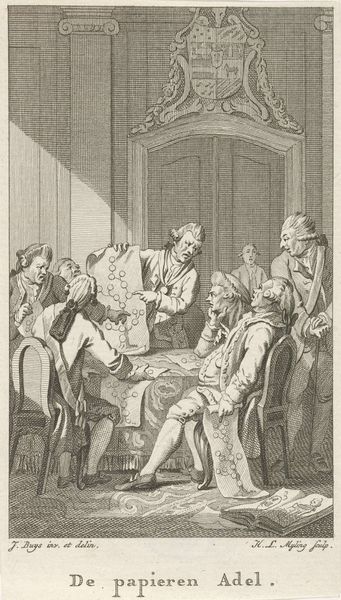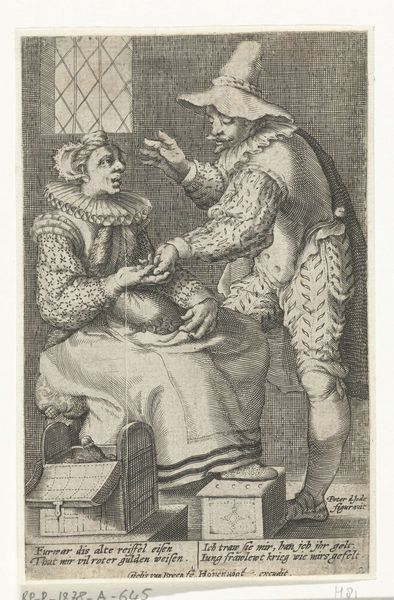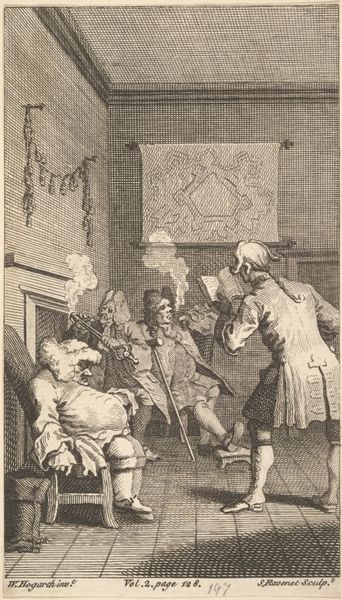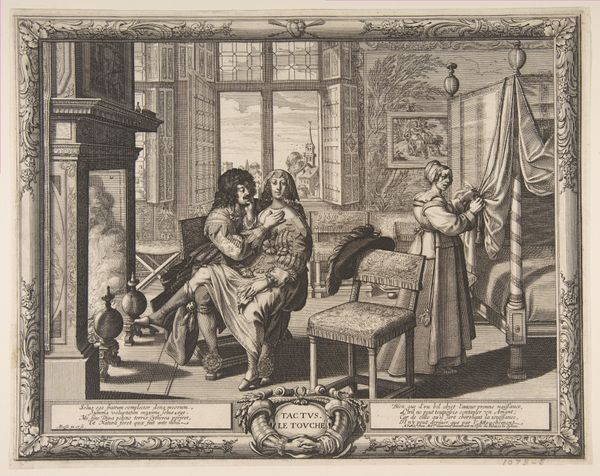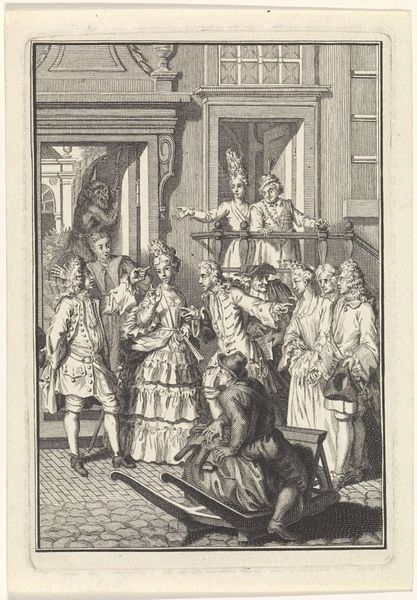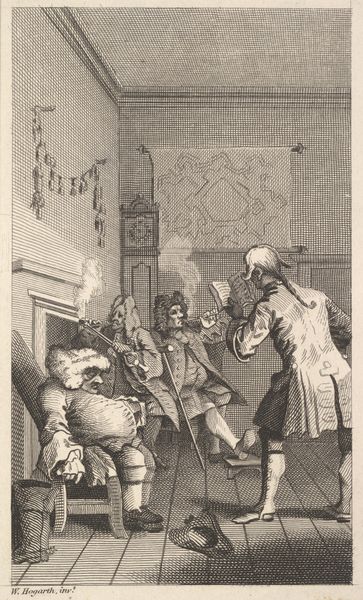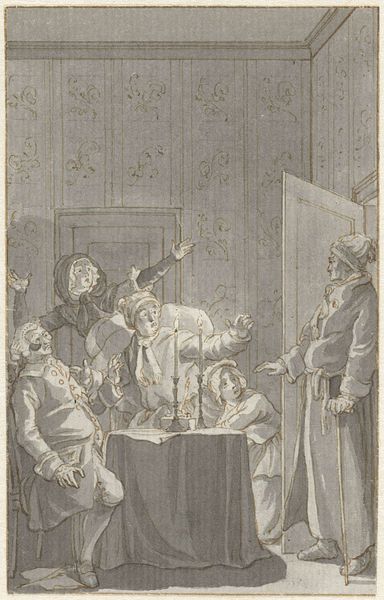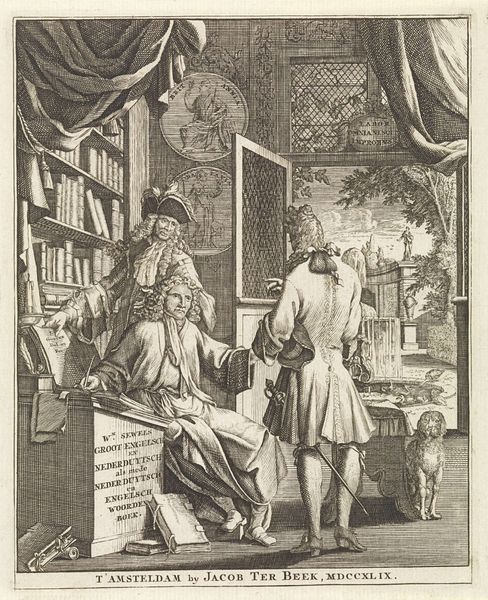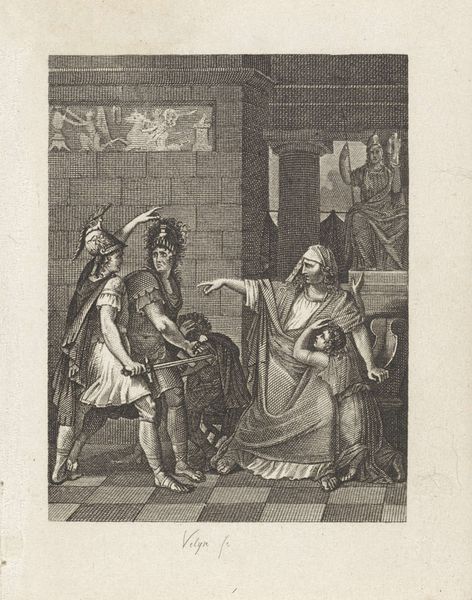
print, engraving
#
allegory
#
narrative-art
#
baroque
# print
#
old engraving style
#
caricature
#
figuration
#
pen-ink sketch
#
line
#
genre-painting
#
engraving
#
erotic-art
Dimensions: height 218 mm, width 163 mm
Copyright: Rijks Museum: Open Domain
Curator: This engraving, dating to 1609, is titled "Duivel schilderend naast een begerige man," and it comes to us from the hand of Willem van Swanenburg. Editor: My initial reaction is one of amused discomfort. The scene is unsettling yet skillfully rendered; the devilish artist juxtaposed against that rather hapless looking man, and of course, the intimate detail of the woman tying his shoe—it all speaks volumes. Curator: Absolutely. The figure of the devil is fascinating. He's meticulously crafting an image on the easel, which serves as a metaphor for temptation and the allure of worldly pleasures. Consider, too, the theatrical curtain backdrop and the collection of what might be books, lending an air of performance to the entire scene. Editor: Precisely! And look at the linearity, the distinct quality of the lines defining each element. Notice, for instance, the intricate details etched on the devil's wings and the texture implied by those finely drawn lines suggesting shading and volume. Curator: It underscores a central idea: the insidiousness of temptation and the way desire ensnares us, rendered here in exquisitely wrought lines and shapes. The Latin inscription below, roughly translated, reinforces this: it's about how Satan's painting of earthly vanity captures the hearts of men, leading them into a lustful trap. The engraving is more than just a depiction; it’s a cautionary tale about the dangers of unchecked desires and worldly temptations. Editor: What strikes me further is how Swanenburg achieves this visual storytelling purely through formal means. The crispness of line, the contrasts in value, they heighten the dramatic tension inherent in the narrative. The composition guides the eye, emphasizing certain figures and objects—it's masterful. Curator: For me, this engraving is a reminder of how artists of the era used allegory to reflect cultural anxieties around faith, morality, and human nature, weaving complex stories within what seems like a simple image. Editor: And for me, it underscores how an understanding of composition, of structure, empowers an artist to tell a story as impactful today as it was then.
Comments
No comments
Be the first to comment and join the conversation on the ultimate creative platform.
